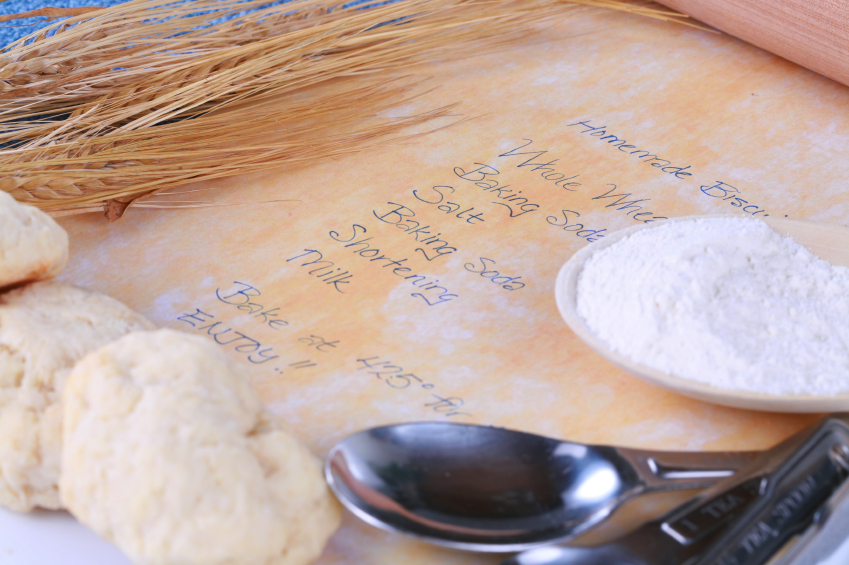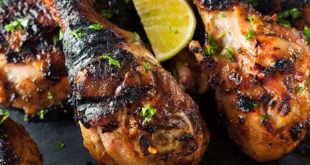Looking to take a recipe and resize it to feed 10 times or 100 times more people than the original recipe called for? There are a few words of caution to review before doing so.
The term for multiplying or dividing a recipe is called scaling, and for a lot of recipes, you’d be okay increasing or decreasing the recipe by 4 times (most cooks would stick with no more than 2 times), but any more than that, and a lot of other things need to be considered. But this is generally speaking, there are other recipes that are almost impossible to resize without knowing how different things affect the recipe, like temperature, pan size, pan color, how the batter is mixed, what type of ingredients are being used, how the ingredients are measured/weighed out, etc. This is because these different factors completely change the food chemistry, and if the original recipe had anything off, that error will be multiplied right along with the scaling.
Savory vs. Baking Recipes
Let’s take a step back and look at the difference in the recipe types. In a roundabout way, there are 2 types of recipes: savory recipes and baking recipes.
Savory Recipes
These types of recipes are easier to scale up or down, because they can be done so by taste, you just need to know the ingredients to add slowly and the ones you can go ahead and throw in the pot.
Items like alcohol, baking powder, baking soda, salt, pepper, herbs, and other seasonings should be added a little at a time. On average, you’ll be adding in 1 1/2 times the amount the recipe calls for when doubling the recipe. This may lead to more mixing, but it’ll save your recipe from being overpowered.
Baking Recipes
If you’re not a baker, this will be a lesson for you. Baking is more than just the art of cooking, there’s a very scientific archetype behind it. It’s not as simple as throwing ingredients together, like with savory recipes. Everything has to be measured out, and most Baker’s would tell you that things should be weighed out instead of measured. Baking recipes would include soufflés, baked items that require yeast, cakes, pies, and custards.
It’s not to say that these types of recipes can’t be scaled, but the proportions are so vital to the success of the end product, that a slight error could completely wreck the recipe. You can see how with some Chefs it would be a great accomplishment to reach that perfect baking recipe large enough to feed their patrons.
Things to Know About Scaling
This isn’t to say that baking recipes are impossible to resize, but it is to say that to do so, you would have to be very particular to the weight of the ingredients, among other things…
Conversion Factor. When scaling a recipe, you can use a simple conversion factor to find out how much more or less of each ingredient you need (although, make sure to look under “Savory Recipes” above for the ones we wouldn’t recommend doing this way). If your recipe serves 10 people, and you want it to serve 14 people, simply divide 14 by 10 to get the conversion factor of 1.4. With that number, you can multiply your ingredients by 1.4 to know how much of each ingredient to have on hand to make the recipe.
Shopping. If you’re multiplying or dividing a recipe, you’ll likely get an odd number of measurements. Don’t worry about getting 25.4 ounces of chicken broth, you can round up and still be fine. For splitting eggs, you can either pour them in a bowl, whip them up, then mix half of the egg in with the other ingredients, or just throw the entire egg in (without the shell of course). Usually recipes that call for eggs will be okay with the other half of the egg added in.
Tasting Savory Recipes. If you can taste it, like with savory recipes, make sure to keep doing taste tests. Chefs will go through spoon after spoon until they find the right taste – it’s easier to wash a spoon, than to fail on a big pot of soup.
To Scale or Not to Scale Baking Recipes. It’s hard to answer this for you, because the answer is, it depends. The easiest way to make more of a recipe is to divide and conquer – make multiple batches of the same recipe, and yes, this does work for some restaurants, especially those that are making delicate recipes like soufflés and custards. It also depends on your comfort level for baking.
If you’ve baked with ingredients like flour, sugar, eggs, yeast, and butter, go ahead and try scaling the recipe. Start with 4 times, then push it from there, but don’t be surprised if you end up with more messes to clean and less successes.
Recipe Archetypes. If you want to be successful in scaling your recipe, we’d recommend learning more about how pan size, cooking time, temperatures, ingredients, and altitude can affect your recipe. You should also know the archetype of your specific recipe… all recipes started from somewhere. Here are a few articles to get you started:
- For Great Cakes, Get the Ratios Right
- How to Mix and Bake the Best Muffins and Cakes
- The High Art of Baking at Altitude
- Cooking at High Altitude
- How Pots and Pans Affect Food
- Time & Temperature
Write it Down. If you’re going to spend the time scaling a recipe, make sure the write things down, so you know what worked and what didn’t. Restaurants, and others in the food service industry, require consistent recipes, and they don’t get there by simply guessing every time.
 Corner Booth Blog | TundraFMP Restaurant Supply, News & Equipment Blog
Corner Booth Blog | TundraFMP Restaurant Supply, News & Equipment Blog




